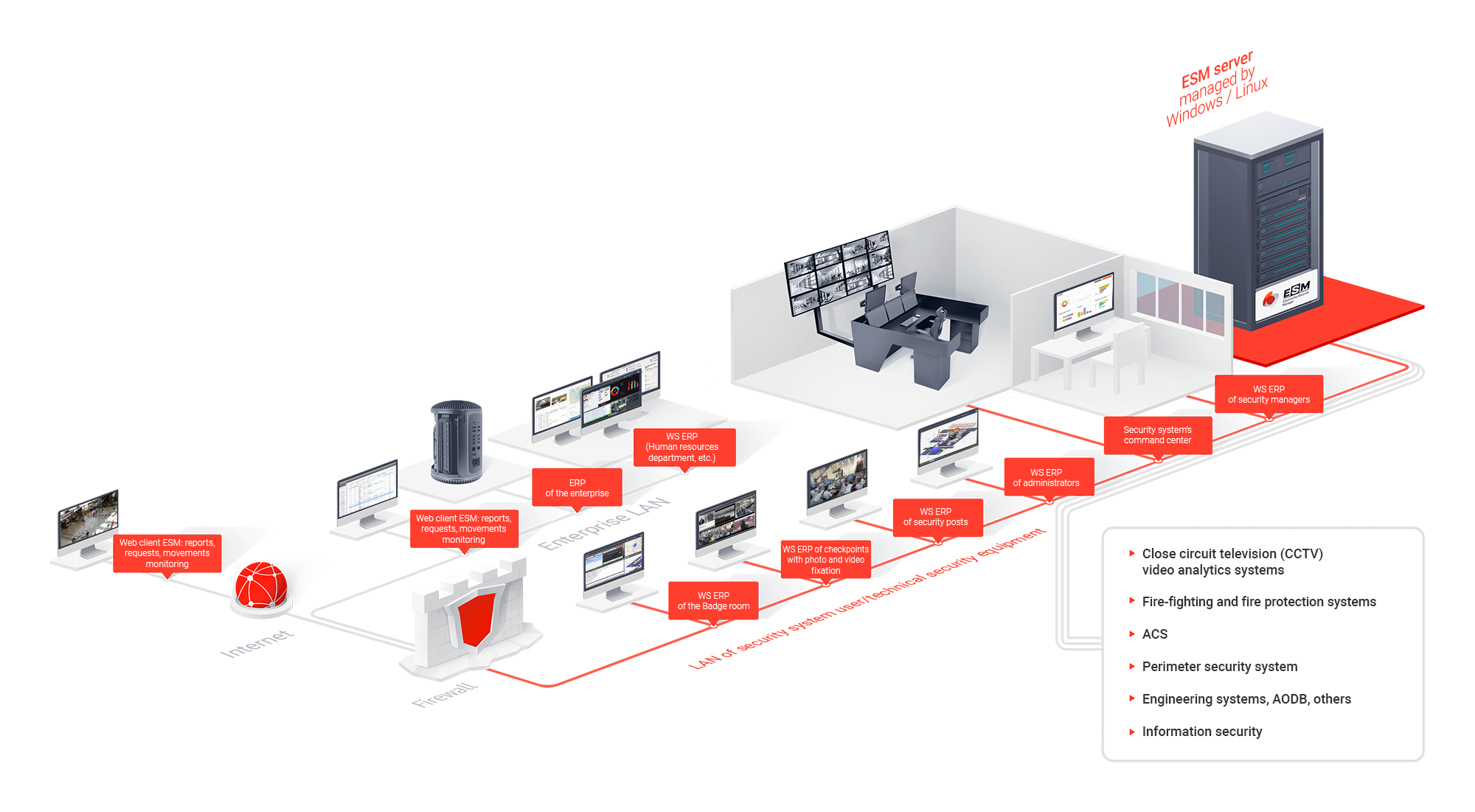Requirements for law enforcement and security support of sports facilities are enlisted in the regulations of international sports associations, such as the KHL, FIFA, etc., as well as in the Government Decree of the Russian Federation of May, 20, 2015 N 485 "On approval of requirements for sports facilities during 2018 FIFA World Cup, 2017 FIFA Confederations Cup".
The total number of spectators in a limited area of the stadium can reach several tens of thousands of people.
There is a strong probability of group disorderly behavior and the occurrence of mass riots during football games.
The entrance groups are the weak point of sports facilities’ security support. On the one hand, they must provide high capacity. On the other hand, they must exclude prohibited items and substances’ carrying.
The following secure subsystems are integrated into the hardware-software solution by the principle of “one-stop shop”: access control systems, videosurveillance systems, systems for protecting the perimeter, intruder detection and alarm systems, secure lighting and others.
- Fight, shooting, use of pyrotechnics.
- Vandalism, violent behavior, riots.
- Uncontrolled crowd (crush).
- Overcrowding of the stadium (sector).
- Throwing loose items on the field, unauthorized access to the playing field.
- A person in a state of intoxication at the stadium.
- Violation of parking rules, theft of a vehicle.
- Blocking of entrances / exits, unauthorized entry, system problems of spectators’ access.
- Smoking in undesignated areas, fire alarm system, and fire.
- Engineering systems’ breakdown or accident.
- Building structures’ failure.
- Detection of unattended objects.
- Theft, assault.
- Detection of counterfeit tickets.

- Ensuring the sports infrastructure’s security.
- Personal security of everyone who is on site (spectators, staff and sportsmen).
- Compliance of the facility’s each section with legislation, national and local regulations and safety standards.
- Perimeter
- Open spaces
- Fan zone
- Pedestrian checkpoints.
- Motor transport checkpoints.
- Working premises.
- Parking lot.
- Bleacher’s entrances.
- Bleachers.
- Cashier’s desk.
- Office building.
- Ensuring anti-terrorist and anti-criminal security, prevention of vandalism.
- Creation of a centralized facility security control point in accordance with the requirements and recommendations of regulatory and legal documentation.
- Prevention of terrorist attacks, as well as identification of guilty of hooligan acts, attacks on competitions’ participants and spectators by the use of advanced videosurveillance and video analytics.
- 24-hour videosurveillance that allows you to watch video in real time, monitor what is happening, make operational decisions.
- The use of automatic high-capacity checkpoints to avoid crowding during a sporting event.
- Differentiation of access rights for comfortable and safe movement of sportsmen and fans around the facility.
- Using special detection equipment for weapons and explosive substances (metal detectors, armored locks, etc.)
- Accounting and registration of vehicles entering the territory of the sports facility.
- High-speed traffic control barriers for comfortable access of a large number of sportsmen, fans and staff’s cars during the sporting event.
- A safety management system that ensures data integration, efficient event processing and alarm signals’ timely transmission to security personnel and management;
- Individual security systems’ level:
-
Access control systems
-
Perimeter protection systems
-
Videosurveillance and video analysis systems
-
Heat monitoring systems
-
Radar and optical systems
-
Facility-based and radio contact alert systems;
-
Global positioning systems (based on GPS / GLONASS) and position finding of moving objects;
-
Specialized applications for managers, where the information filtered by various criteria is transmitted (for example, signals about critical deviations in the work of a particular site, claiming direct intervention of the manager).
-